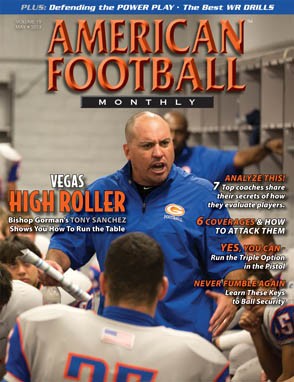Article CategoriesAFM Magazine
|
Making the Grade – Spring evaluation is essential for maximizing each player’s contribution to the teamby: JohnAllen SnyderOffensive Coordinator Pequea Valley High School (PA) © More from this issue Spring evaluation is essential for maximizing each player’s contribution to the team. While coaches understand that player evaluation is a year-round necessity, spring is a particularly important time for returning player evaluations as your team heads into the summer pre-season lull. It’s the perfect time to size up the strengths and weaknesses of each athlete and set personal and team goals. What is the best way to evaluate a returning player? American Football Monthly asked seven high school and college head coaches. They included:
|
|
|||||||
| HOME |
MAGAZINE |
SUBSCRIBE | ONLINE COLUMNISTS | COACHING VIDEOS |
Copyright 2025, AmericanFootballMonthly.com
All Rights Reserved





